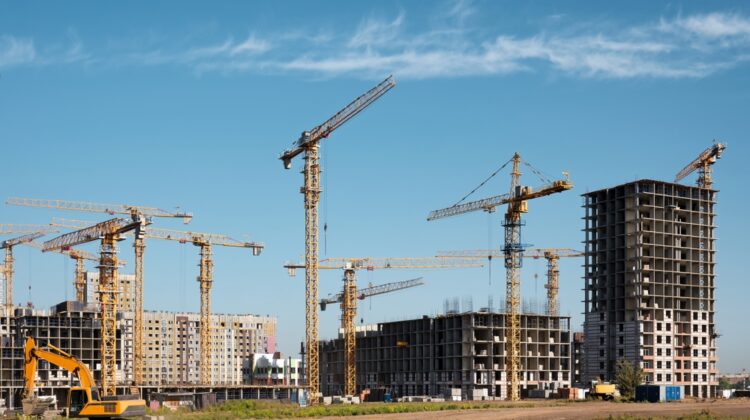
Construction Waste Recycling Process for a Greener Future
 Construction Waste Recycling for a Greener Future
Construction Waste Recycling for a Greener Future
The construction industry plays a critical role in shaping our world — but it also produces a large amount of waste. Every year, tons of debris such as concrete, metal, wood, and glass end up in landfills, harming the environment. This is where construction waste recycling Process becomes essential.
By implementing effective construction waste recycling practices, builders can reduce pollution, conserve resources, and promote a more sustainable approach to development. It’s not just an environmental necessity; it’s a step toward smarter, cost-effective construction.
What Is Construction Waste Recycling?
Construction waste recycling refers to the process of reusing and repurposing materials generated during building, renovation, and demolition. Instead of sending waste to landfills, recyclable materials are processed and transformed into usable products, reducing the need for new raw materials.
Typical materials that can be recycled include concrete, bricks, glass, wood, metals, asphalt, and plastics. The goal of construction waste recycling is to create a closed-loop system that minimizes environmental impact and maximizes resource efficiency.
Why Construction Waste Recycling Is Important
The importance of construction waste recycling extends beyond environmental conservation. It plays a crucial role in ensuring sustainable construction and reducing operational costs. Here are the key benefits:
-
Reduces Environmental Impact – Recycling helps cut down on landfill waste, air pollution, and greenhouse gas emissions.
-
Promotes Resource Efficiency – Reusing materials reduces the demand for virgin resources like sand, gravel, and timber.
-
Supports Green Building Goals – Essential for achieving LEED certification and complying with green construction practices.
-
Saves Costs – Recycled materials often cost less than new ones, reducing project expenses.
-
Enhances Corporate Sustainability – Demonstrates environmental responsibility and improves brand image.
By prioritizing construction waste recycling, developers contribute to a cleaner, more resilient future.
Types of Materials Recycled in Construction
Not all waste is created equal. The efficiency of construction waste recycling depends on the materials involved. Common recyclable materials include:
1. Concrete and Masonry
Concrete can be crushed and reused as aggregate for new pavements or foundations, reducing demand for new raw materials.
2. Metals
Steel, aluminum, and copper are 100% recyclable and retain their strength even after multiple uses.
3. Wood
Reclaimed wood can be repurposed for flooring, furniture, or fuel, minimizing deforestation.
4. Glass and Plastics
Recycled glass is used for tiles and decorative finishes, while plastics are remanufactured into pipes and insulation materials.
5. Asphalt
Reclaimed asphalt pavement (RAP) is widely reused in new road construction, promoting circular economy principles.
Steps in the Construction Waste Recycling Process
Implementing construction waste recycling requires a structured approach for maximum efficiency:
-
Waste Audit: Assess the type and quantity of waste produced on-site.
-
Segregation: Sort materials into recyclable and non-recyclable categories.
-
Collection and Transport: Use designated bins and transport waste to recycling facilities.
-
Processing: Crush, melt, or reprocess materials for reuse.
-
Reuse or Sale: Recycled materials are used within the project or sold for other applications.
This systematic process ensures that construction waste recycling contributes effectively to sustainability goals.
Construction Waste Recycling in India
India is making steady progress toward sustainable construction and waste reduction. The Central Pollution Control Board (CPCB) has issued detailed guidelines for construction waste recycling under its Construction and Demolition (C&D) Waste Management Rules, 2016.
Cities like Delhi, Ahmedabad, and Bengaluru have established recycling plants that convert C&D waste into usable materials such as paver blocks and tiles. These initiatives align with India’s vision of promoting sustainable construction methods and reducing landfill pressure.
Integrating Construction Waste Recycling into Green Building
To achieve true sustainability, construction waste recycling should be integrated with green construction practices such as low-emission construction, smart building technology, and life cycle assessment.
When combined, these strategies reduce pollution, enhance energy efficiency, and support net-zero energy buildings. Developers who adopt these integrated approaches can achieve certifications like LEED or IGBC, gaining both environmental and business advantages.
Partner with Experts in Sustainable Construction
At AMS India, we specialize in sustainable building solutions that include advanced construction waste recycling systems. Our team focuses on resource efficiency, waste management, and environmentally responsible design to ensure every project meets India’s sustainability standards.
By working with AMS India, you can transform waste into opportunity and build with purpose.
Conclusion
Construction waste recycling is a key component of sustainable development. It minimizes pollution, saves resources, and reduces the carbon footprint of construction projects.
As the industry continues to evolve, embracing construction waste recycling will not only help meet environmental regulations but also foster innovation and long-term cost efficiency. The path to sustainable construction begins with responsible waste management — and recycling is the cornerstone of that journey.
Read more related articles to enhance your knowledge and make informed decisions
Cost-Effective Modular Construction: Fast, and Sustainable Building Solutions
Smart Modular Buildings: Innovative, Efficient, and Sustainable Construction








